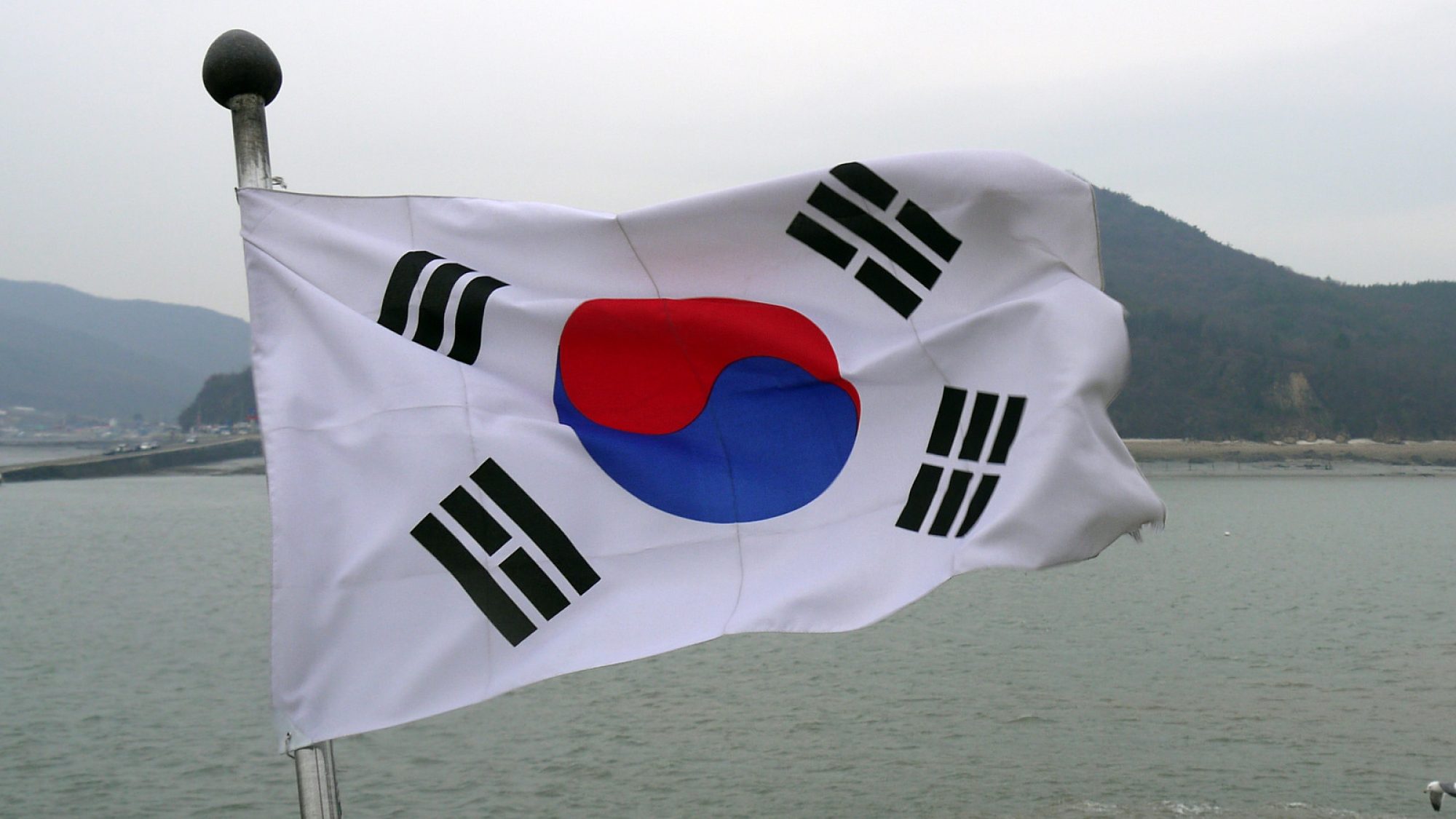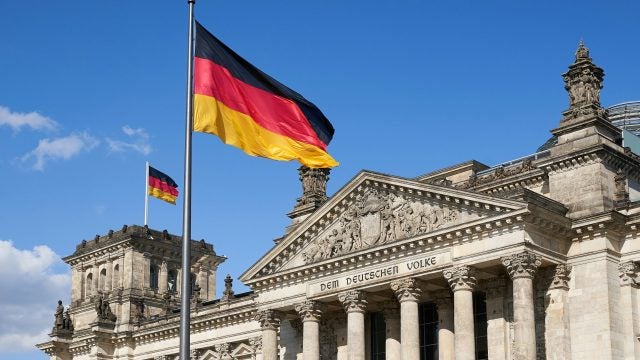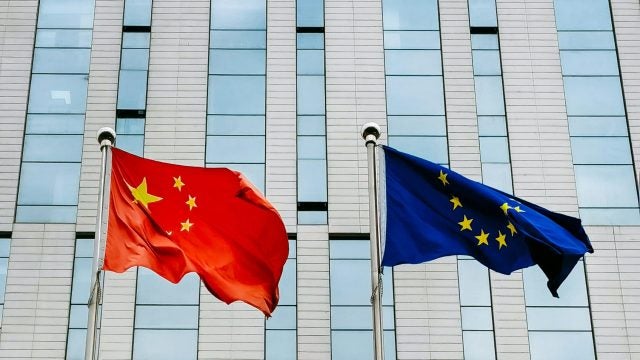
Title: Reimagining the U.S.-Korea Relationship in the Indo-Pacific
South Korea is reluctant to take a side in the growing rivalry between the United States and China. Some have contended that the onus is on Seoul to better align its Indo-Pacific initiative with that of the United States by prioritizing regional security issues. However, given key constraints, both countries and the region would realistically benefit more from Washington placing a greater emphasis on South Korea’s economic contributions to supporting the rules-based order in the Indo-Pacific.
No matter how you frame it – “a shrimp among whales,” “stuck in the middle,” or “between a rock and a hard place” – South Korea is among the countries most affected by the ongoing great power competition between the United States and China. The military alliance with Washington is a core pillar of Seoul’s foreign policy, but its economy is also highly dependent on trade with China. However, this picture is further complicated by the high and growing value of trade and investment with the United States, as well as China’s important role in resolving the North Korea security issue. As tensions between Beijing and Washington have intensified and fault lines started to take form, South Korea has pursued “strategic ambiguity” to avoid picking a side, a strategy which is unlikely to change soon. Still, there is more that the United States can do to enhance its relationship with South Korea in the Indo-Pacific, particularly on economic issues.
Under the Trump administration, the United States’ “Free and Open Indo-Pacific” strategy was disproportionately focused on traditional security matters and countering a more assertive China. Seoul, however, was hesitant to wholly embrace this initiative to avoid invoking Beijing’s ire. China is by far South Korea’s largest export destination, representing about 25 percent of total goods exports. As an economy highly dependent on exports, South Korea is particularly vulnerable to Beijing weaponizing this interdependence. This was on clear display after Seoul’s deployment of THAAD, an American anti-ballistic missile defense system, which triggered Chinese economic coercion that cost the South Korean economy anywhere between $7.5 and $25 billion.
Further, Beijing is a critical player in successfully resolving the North Korea issue and can either be a competitor or collaborator for influence in Pyongyang. The best reflection of this might be that between March 2018 and June 2019 – the height of Trump’s diplomacy with Pyongyang – North Korean leader Kim Jong-un and Chinese president Xi Jinping met five times, while Trump and Kim only met three times.
Recognizing the need to diversify the country’s major economic and diplomatic relationships, South Korean President Moon Jae-in launched his own regional initiative known as the New Southern Policy (NSP) in 2017 and the NSP Plus in 2020. With the ambitious goal of elevating ties with ASEAN and India to the levels of South Korea’s relations with the likes of the United States, China, Japan, and Russia, the NSP is centered around the “three Ps”: peace, prosperity, and people. In practice, however, the “peace” issues of the NSP that deal with security have lagged behind the development- and exchange-focused aspects of the initiative, resulting in a divergence with the more security-focused American regional strategy.
To bridge the gap between Seoul and Washington under Trump, the most prescribed remedy among experts was that the Moon administration should direct greater attention to the peace pillar. However, the structural constraints which led Seoul to be more hesitant in these areas have not fundamentally changed since and are likely to remain for years to come. Any increased emphasis on regional security would be too limited to transform United States-South Korea relations in the Indo-Pacific. As long as the U.S. competition with China remains a core component of Washington’s Indo-Pacific approach, Seoul’s enthusiasm for American regional initiatives is likely to be tempered. To shore up this crucial shortcoming, the United States could better utilize South Korea’s strengths by focusing on a less contentious area: economic engagement.
To its credit, the Biden administration has broadened the number of opportunities for greater regional cooperation with South Korea. In addition to making alliances more of a two-way street, Biden has pushed for the Quadrilateral Strategic Dialogue (the Quad) – a group consisting of the United States, India, Japan, and Australia – to specifically address vaccine development and distribution, climate change, and emerging technologies. These areas are where South Korea has a competitive advantage and demonstrated leadership, and are also areas that are less likely to be perceived as anti-China.
On the other hand, the Biden administration’s answer to Trump’s withdrawal from the Trans-Pacific Partnership (TPP) is poised to fall short of the leadership on trade that many in the region want the United States to return to. A shift in the domestic landscape after Trump’s election has made the United States’ return to the mega-regional trade agreement’s successor, the Comprehensive and Progressive TPP (CPTPP), a political non-starter, which is likely the impetus for the Indo-Pacific Economic Framework to be announced early this year. Though details have not been announced, the Biden administration has been clear that this will not be a traditional trade agreement. Rather, it will be a “flexible” arrangement to “define shared objectives” for issues such as trade facilitation, standards for the digital economy and technology, and supply chain resiliency. In contrast, China is a party of the Regional Comprehensive Economic Partnership (RCEP) – the largest trade agreement in the Indo-Pacific and the world – and is seeking to join the CPTPP.
As a core component of upholding the liberal rules-based order in the region, market-driven economic cooperation is too important for the United States to pursue below its full potential. Given its own constraints at home, Washington should start thinking more laterally beyond emerging issues of importance. In other words, the United States should also pursue how different countries in the Indo-Pacific can add different value toward shared regional goals – both with and independent of direct cooperation with the United States.
In this sense, there is ample space to build on the foundations of South Korea’s economic outreach in the region. With a vested interest in the strength of the existing international order, South Korea is already highly active in the region through non-military means. Therefore, for the United States, the relationship with South Korea should be better recognized as a “values multiplier” and not just a “force multiplier.”
South Korea has been deepening its economic ties within the region on its own. Prior to the pandemic in 2019, its total trade amounted to $151.3 billion with ASEAN countries and $20.7 billion with India, both up nearly 30 percent from 2016 levels. Seoul played a key role in facilitating this increased trade through trade agreements with ASEAN and India, entering into force in 2007 and 2010 respectively, and will further economic engagement with ASEAN through RCEP. As of 2019, total South Korean foreign direct investment (FDI) among ASEAN countries has amounted to nearly $10 billion, constituting 15 percent of the country’s overall FDI. Through the NSP, the South Korean government has taken an even more active role to build regional commercial ties with new initiatives such as the creation of the Korea-South & Southeast Asia Business Coalition.
Southeast Asia is also a clear priority in South Korea’s Official Development Assistance (ODA). Aid to ASEAN members almost doubled from $234.6 million in 2010 to $472.8 million in 2019. That year, aid to Southeast Asia represented 15 percent of its total ODA, with five ASEAN members landing among the top 10 recipients of South Korean aid. Additionally, the South Korean government announced plans to double ODA to six ASEAN countries from the 2019 level to $151 million by 2023. Seoul has added further value by drawing from its own experience of going from a developing to a developed economy and its expertise in areas such as digital infrastructure and smart cities.
However, there have been limitations to South Korea’s efforts. Seoul fell below its stated target of $200 billion in trade with ASEAN by 2020. South Korea’s share of ASEAN members’ imports also decreased from 7.7 percent in 2017 to 6.9 percent in 2020, though largely driven by an 18.2 percent drop in exports to Indonesia in 2020. ODA and FDI to Southeast Asia also trails behind other advanced countries. For instance, in 2019, South Korea’s $2.4 billion in new investment to ASEAN ranked 17th among countries. When its nearly $5.5 billion in new investment ranked sixth just a year earlier, it was still well behind the EU’s collective $25.8 billion and Japan’s $23.3 billion. Further, much of South Korea’s investment is concentrated in Vietnam – particularly in manufacturing electronic goods for export, but also increasingly in consumer goods. As of 2019, about half of South Korea’s trade and investment in ASEAN is with Vietnam.
These economic engagement challenges should not be expected to disappear completely; nevertheless, by prioritizing South Korea’s role in the region as a highly engaged and responsible economic player, Washington would do more to help alleviate concerns in Seoul about great power competition, while advancing market-based principles and growth in the Indo-Pacific. Such a move would undoubtedly encourage South Korea to redouble its economic activity with the region and take on more responsibilities in key forums and issue areas. Although Seoul cannot realistically be expected to outperform larger economies, it can help to catalyze more trade and development, particularly in critical Fourth Industrial Revolution areas where South Korea has demonstrated expertise. In a contest of over which values will govern the future of the region, this is ultimately as important to the United States as traditional security cooperation.
. . .
Kyle Ferrier is a Fellow and Director of Academic Affairs at the Korea Economic Institute of America. He was formerly a regular contributor to The Diplomat’s “The Koreas” section from 2018 to 2021 and holds an MSc in International Political Economy from the London School of Economics.
Image Credit: Wikimedia Commons; Creative Commons Attribution 2.0 Generic
Recommended Articles

This article contends that South Africa’s 2025 G20 presidency presents a critical opening to shape governance of critical mineral supply chains, essential for renewable energy, digital economies, and national…

Germany’s economy is being throttled by a more competitive China that has usurped its previous manufacturing dominance in many industries. In response, Germany has doubled down on the China bet…

In 2021, the European Union (EU) attempted to assert itself in the Indo-Pacific arena to increase its geopolitical relevance by releasing an ambitious and multifaceted Indo-Pacific Strategy. However, findings from…